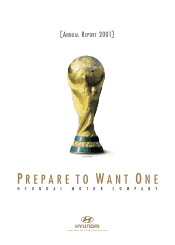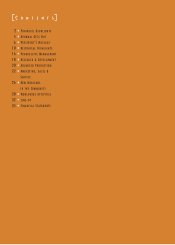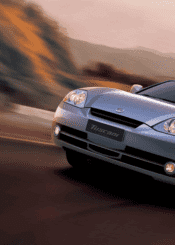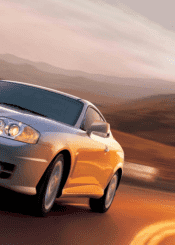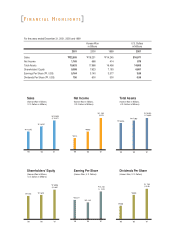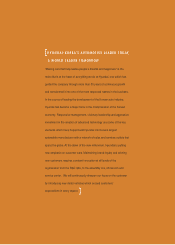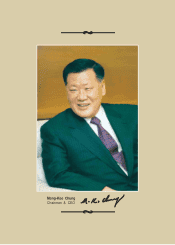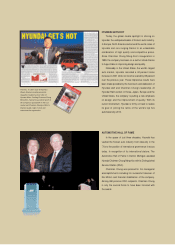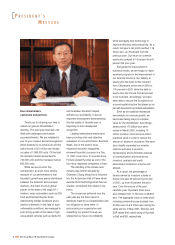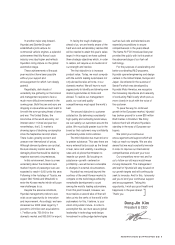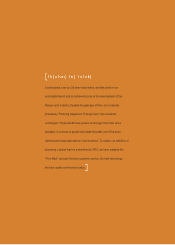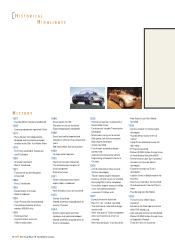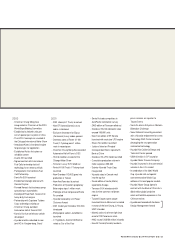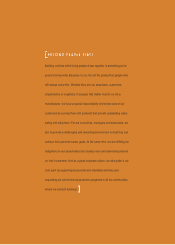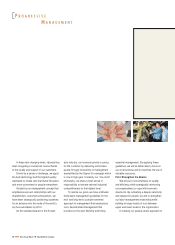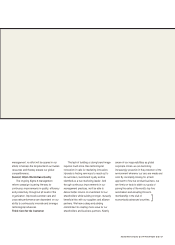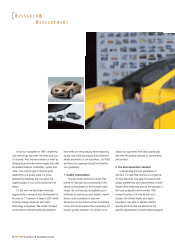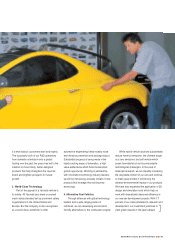Hyundai 2001 Annual Report Download - page 10
Download and view the complete annual report
Please find page 10 of the 2001 Hyundai annual report below. You can navigate through the pages in the report by either clicking on the pages listed below, or by using the keyword search tool below to find specific information within the annual report.
In another major step forward,
Hyundai and DaimlerChrysler
established a joint venture for
commercial vehicle engines, a splendid
achievement that lifts Korea’s auto
industry one step higher and reflects
Hyundai’s rising stature on the global
automotive stage.
These achievements of the past
year would not have been possible
without your support and
encouragement for which I am deeply
grateful.
Regrettably, dark clouds of
uncertainty are gathering on the horizon
and management expects to face a
much more difficult environment in the
coming year. Both the yen and euro are
dropping in value while we must learn to
live with the ever-growing threat of terror
and war. The United States, the
locomotive of the world economy, cut
interest rates 11 times last year but
nevertheless, the U.S. market is
showing signs of declining consumption
since the September terrorist attack.
There is also growing concern and
unease over international oil prices.
Although demand patterns are cyclical,
the auto industry cannot avoid the
damaging blow that would be dealt by
negative economic circumstances.
In this environment, there is a new
uncertainty about the domestic auto
market. Imports of passenger cars are
expected to reach 10,000 units this year.
Following in the footsteps of Toyota, we
expect GM, Honda and Mitsubishi to
enter the Korean market which will pose
new challenges to us.
Despite the adverse conditions,
Hyundai management prefers to see
crisis as an opportunity for innovation
and improvement. Accordingly, we have
increased our 2002 sales target by 7
percent to 24 trillion won equivalent to
1.7 million units: 750,000 for the
domestic market and 950,000 for export.
In facing the tough challenges
ahead of us, we are keenly aware of the
hard work and extraordinary resolve that
will be needed to attain this year’s sales
target. In this regard, we have outlined
three strategic objectives which, in order
to realize, will require us to muster all of
our strength and resolve.
The first objective is to increase
product value. Today, we must compete
with the world’s leading automakers not
only abroad but also at home, in our
domestic market. We will have to work
aggressively to identify and develop new
market opportunities at home and
abroad. To realize our management
goals, our cost and quality
competitiveness must equal the world’s
best.
The second objective is customer
satisfaction. By delivering consistently
high quality and cultivating brand value,
we can satisfy our customers around the
globe. We must build greater trust in the
brand so that customers may confidently
purchase Hyundai motor vehicles.
The third objective we must strive for
is greater substance. This year there are
many external factors such as the threat
of war, terror and volatility in exchange
rates and oil prices that threaten to
impede our growth. By focusing on
substance—growth centered on
profitability—we will be less vulnerable
to changes in external circumstances.
Hyundai has ventured beyond the
confines of the small Korean market to
compete on the world stage achieving
remarkable development to count
among the world’s leading automakers.
From this point forward, however, we
must realize a second take off that will
take us into the ranks of the world’s elite
automakers for this, I believe, is your
vision of Hyundai’s future. In order to
accomplish this, we must secure global
leadership in technology and design.
Investment in cutting edge technologies
such as fuel cells and telematics are
essential preconditions to secure
competitiveness in the years ahead.
The Santa Fe FCV introduced last year
provided the public with its first peak at
the advanced stage of our fuel cell
technology.
For the purposes of accelerating and
better coordinating R&D programs,
Hyundai opened engineering and design
centers in the United States, Europe and
Japan. As reflected in the success of
Santa Fe which was developed by
Hyundai Motor America, we recognize
the increasing importance and necessity
of conducting R&D locally which puts us
more closely in touch with the voice of
the customer.
To pave the way for continued
growth in the European market, Hyundai
has broken ground for a new $35 million
R&D Center in Frankfurt. We firmly
believe that it will enhance Hyundai’s
standing in the eyes of European car
buyers.
We solicit your continuous
encouragement and support which will
help us reach our targets. We are also
aware that we must constantly innovate
in order to improve our international
competitiveness and earn your trust.
Our competitors never rest and for
us to follow our old ways would mean
moving backwards. The management
and staff of Hyundai will stay focused on
our growth targets and will continuously
seek to innovate. And for this, I sincerely
ask you to lend your continuous support
and encouragement. Taking this
opportunity, I wish you good health and
happiness in the year ahead.
Thank you.
Dong-Jin Kim
President & CEO
7
2001 Annual ReportHyundai Motor Company

